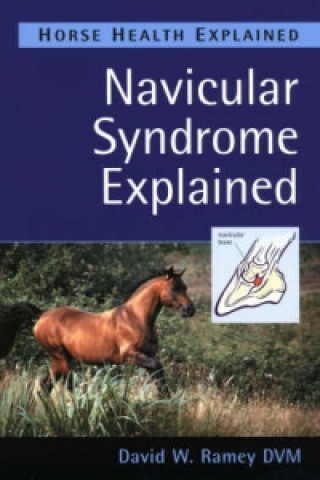
Code: 05016924
Navicular Syndrome Explained
by David W. Ramey
Navicular Syndrome is one of the most common, and sometimes one of the most frustrating causes of lameness in performance horses. Navicular lameness is caused by the pain associated with the compression of an inflamed bone and rel ... more
- Language:
 English
English - Binding: Paperback
- Number of pages: 96
Publisher: Kenilworth Press, 2002
- More about this

24.19 €
Availability:
50/50 We think title might be available. Upon your order we will do our best to get it within 6 weeks.
We think title might be available. Upon your order we will do our best to get it within 6 weeks.We search the world
You might also like
-

Equine Embryo Transfer
88.34 € -

Equine Locomotion
143.53 € -

Equine Osteopathy
42.52 € -

Osteopathy and the Treatment of Horses
113.57 € -

Lion at Bay
23.88 € -

Hezbollah
25.94 € -

Romeo and Juliet
4.21 € -22 %
Give this book as a present today
- Order book and choose Gift Order.
- We will send you book gift voucher at once. You can give it out to anyone.
- Book will be send to donee, nothing more to care about.
Availability alert
Enter your e-mail address and once book will be available,
we will send you a message. It's that simple.
More about Navicular Syndrome Explained
You get 59 loyalty points
 Book synopsis
Book synopsis
Navicular Syndrome is one of the most common, and sometimes one of the most frustrating causes of lameness in performance horses. Navicular lameness is caused by the pain associated with the compression of an inflamed bone and related structures. In its mildest form it will limit performance, but at the worst it can kill a sale or end a career. It will never go away and it will usually worsen over time. However, it can often be effectively managed with proper diagnosis, medical therapy and therapeutic trimming and shoeing. The navicular bone is located within the hoof, just behind the coffin joint formed between the short pastern and coffin bones. It is held in place by the impar and the suspensory navicular ligaments and the tendon of the deep digital flexor muscle which runs behind and under navicular bone and attaches to the coffin bone. The space between the deep digital flexor tendon and the navicular bone is protected by a fluid filled sac called the navicular bursa. In navicular syndrome, any of these structures may become inflamed and painful. Functionally, the navicular bone bears part of the horse's weight and it acts as a fulcrum for the deep digital flexor tendon. When the leg is in weight bearing position and forward motion is initiated, the deep digital flexor muscle contracts, pulls on its tendon and transmits tremendous pressure to the related tendon, bursa, bone and joint. In navicular syndrome it is the pressure on the inflamed structures which causes the pain and lameness. Although it is not an uncommon cause of lameness, it can be difficult to make a definitive diagnosis of navicular syndrome. It can cause intermittent or shifting lameness, it can appear to be a suspensory injury of shoulder lameness, or it can simply be difficult to prove that all the pain originate from navicular structures. This book has been written to help clear up many of the concerns and misconceptions that surround navicular syndrome in the horse - a condition that is often diagnosed even when such an interpretation isn't warranted. The author describes what the condition is (and what it is not), how it develops, and, most importantly, how to participate in and understand the diagnosis and various treatments. Findings on causes and treatments are also included.
 Book details
Book details
Book category Books in English Medicine Veterinary medicine Veterinary medicine: large animals (domestic / farm)
24.19 €
- Full title: Navicular Syndrome Explained
- Author: David W. Ramey
- Language:
 English
English - Binding: Paperback
- Number of pages: 96
- EAN: 9781872119472
- ISBN: 1872119476
- ID: 05016924
- Publisher: Kenilworth Press
- Weight: 220 g
- Dimensions: 229 × 189 × 8 mm
- Date of publishing: 02. November 2002
Trending among others
-

Diseases of Poultry
278.52 € -

Kinesiology Taping for Horses
20.79 € -15 % -

Equine Reproductive Procedures, 2nd Edition
222.51 € -

Bovine Pathology
251.13 € -

Equine Exercise Physiology
148.89 € -
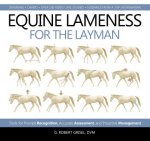
Equine Lameness for the Layman
30.37 € -16 % -

Color Atlas of Veterinary Anatomy, Volume 2, The Horse
94.62 € -6 % -

Equine Emergencies
141.88 € -

Homeopathy for Horses
54.26 € -5 % -

Equine Internal Medicine
57.14 € -

Massage for Horses
8.23 € -5 % -

Equine Internal Medicine
228.48 € -15 % -

Practical Guide to Equine Radiography
96.58 € -9 % -

Diseases of The Goat, 4e
91.22 € -

Healing For Horses
27.59 € -23 % -
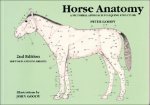
Horse Anatomy
20.89 € -14 % -

Manual of Equine Reproduction
109.76 € -

Rebhun's Diseases of Dairy Cattle
207.37 € -

Cardiology of the Horse
119.74 € -

Nutrient Requirements of Horses
180.39 € -
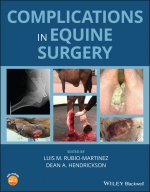
Complications in Equine Surgery
251.96 € -

Handbook for the Sheep Clinician
104.50 € -

Equine Infectious Diseases
223.95 € -

Verhaltensprobleme bei Nager, Reptil & Co.
45.40 € -

Housing to Optimize Comfort, Health and Productivity of Dairy Cattles, An Issue of Veterinary Clinics of North America: Food Animal Practice
104.71 € -

Aromatherapy for Horses
8.54 € -4 % -

Horses in Translation
27.38 € -4 % -

Essential Hoof Book
37.57 € -19 % -

Saunders Equine Formulary
68.67 € -9 % -

Physical Therapy and Massage for the Horse
47.25 € -

BSAVA Manual of Canine and Feline Dentistry and Oral Surgery, 4th edition
136.43 € -

Language Signs and Calming Signals of Horses
48.59 € -

Sheep, Goat, and Cervid Medicine
159.18 € -

Cattle Lameness and Hoofcare
32.43 € -9 % -

Equitation Science 2e
58.07 € -3 % -

Sheep and Goat Diseases
34.07 € -4 % -

Equine Applied and Clinical Nutrition
144.97 € -

Equine Nutrition and Feeding 4e
101.21 € -

Equine Pediatric Medicine
174.11 € -14 % -

Biomechanics and Physical Training of the Horse
68.47 € -

Atlas of Diagnostic Radiology of the Horse
71.66 € -4 % -

Bovine Surgery and Lameness, 3e
94.31 € -

Introduction to Horse Nutrition
56.93 € -

Senior Horse
10.39 € -4 % -

Horse Conformation
27.28 € -13 % -

Complete Equine Veterinary Manual
30.88 € -

Veterinary Acupuncture
74.95 € -
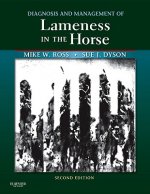
Diagnosis and Management of Lameness in the Horse
180.81 € -9 % -

Equine Medicine, Surgery and Reproduction
119.85 € -1 %
Collection points Bratislava a 2642 dalších
Copyright ©2008-24 najlacnejsie-knihy.sk All rights reservedPrivacyCookies


 15549 collection points
15549 collection points Delivery 2.99 €
Delivery 2.99 € 02/210 210 99 (8-15.30h)
02/210 210 99 (8-15.30h)